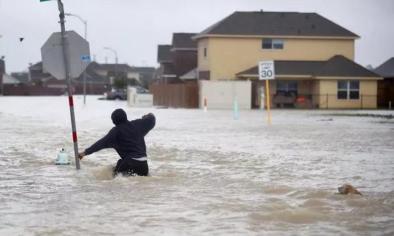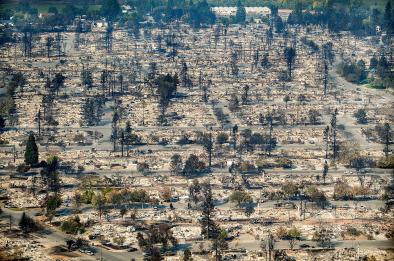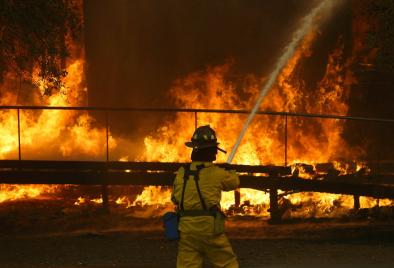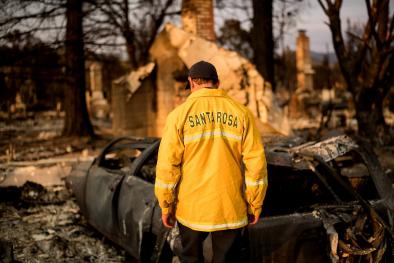Western states lived with a constant reminder of climate change in 2017
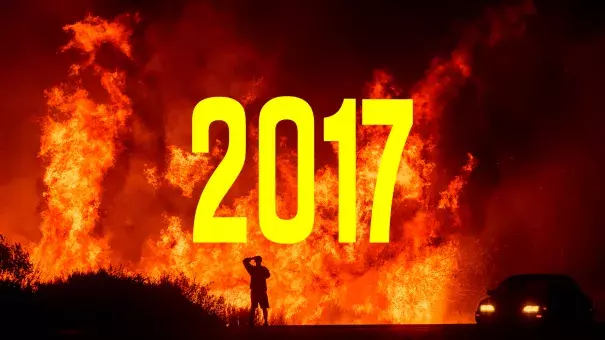
In the 1970s, wildfire season in the western United States — roughly defined as the time of year when climatic factors are most conducive to fires — was five months. Today, that season stretches for at least seven months, if not longer, due in part to the general warming happening out west. Average temperatures have increased by about 1.9°F across the western U.S. since the 1970s, nearly twice the pace of global average warming. A study published in October found that rising temperatures can be held responsible for almost half of the increase in acres burned in wildfires since the 1970s.
With reports of wildfires tearing through Oregon, northern California, and southern California, it might seem like the number of wildfires has been increasing in recent years, which isn’t actually the case. The number of wildfire incidents has actually declined in California since the 1980s, but the number of large fires — defined as larger than 100,000 hectares, or about 250,000 acres — has risen substantially. So while the total number of fires might be decreasing, really big fires — the ones that burn through the most fuel and tend to have the largest impact on humans — are increasing.
Like the longer fire season, the increase in large fires is also likely a result of climate change. As global temperatures increase, the fuel that feeds fires — trees, brush, chaparral grass — becomes drier and drier. Higher temperatures also force evaporation from the soil, leaving the land extremely dry and fire-prone. One study, published last year, found that half of the increase in fire area since 1984 could be attributed to human-caused climate change.
“Climate change doesn’t just increase temperatures. It’s not just that it is warm this year, it’s that it has been warmer on average for years,” Leroy Westerling, professor of management of complex systems at the University of California, Merced, told ThinkProgress. “It’s this long-term, cumulative drying that is due to warmer temperatures.”
In this hot, dry new world, wildfires like the Thomas Fire, which currently burning in Southern California, easily shatter records. The Thomas Fire is the first-ever large winter fire, fanned by Santa Ana winds and above-average temperatures.
Related Content
